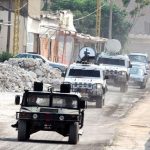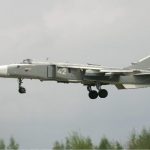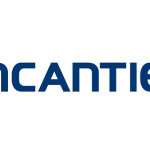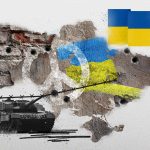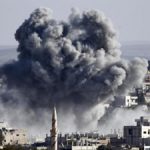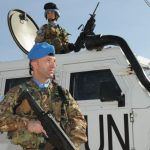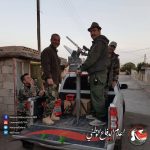Sarin: l’atto d’accusa di Washington a Damasco
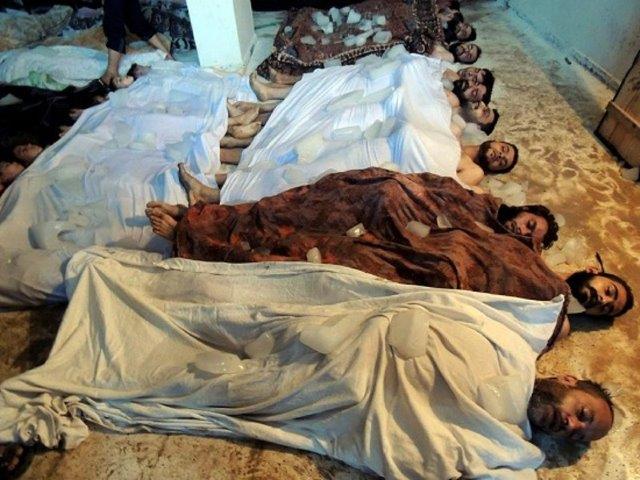
Pubblichiamo integrale e in lingua originale lo “U.S. Government Assessment of the Syrian Government’s Use of Chemical Weapons on August 21, 2013” con il quale Washington accusa il regime di Bashar Assad di aver imoiegato armi chimiche nei sobborghi della capitale il 21 agosto.
The United States Government assesses with high confidence that the Syrian government carried out a chemical weapons attack in the Damascus suburbs on August 21, 2013. We further assessthat the regime used a nerve agent in the attack. These all-source assessments are based onhuman, signals, and geospatial intelligence as well as a significant body of open sourcereporting. Our classified assessments have been shared with the U.S. Congress and keyinternational partners. To protect sources and methods, we cannot publicly release all availableintelligence – but what follows is an unclassified summary of the U.S. Intelligence Community’sanalysis of what took place.
Syrian Government Use of Chemical Weapons on August 21
A large body of independent sources indicates that a chemical weapons attack took place in theDamascus suburbs on August 21. In addition to U.S. intelligence information, there are accountsfrom international and Syrian medical personnel; videos; witness accounts; thousands of socialmedia reports from at least 12 different locations in the Damascus area; journalist accounts; and reports from highly credible nongovernmental organizations.A preliminary U.S. government assessment determined that 1,429 people were killed in thechemical weapons attack, including at least 426 children, though this assessment will certainlyevolve as we obtain more information.We assess with high confidence that the Syrian government carried out the chemical weaponsattack against opposition elements in the Damascus suburbs on August 21. We assess that thescenario in which the opposition executed the attack on August 21 is highly unlikely. The bodyof information used to make this assessment includes intelligence pertaining to the regime’s preparations for this attack and its means of delivery, multiple streams of intelligence about theattack itself and its effect, our post-attack observations, and the differences between thecapabilities of the regime and the opposition. Our high confidence assessment is the strongest position that the U.S. Intelligence Community can take short of confirmation. We will continueto seek additional information to close gaps in our understanding of what took place.
U.S. Government Assessment of the Syrian Government’sUse of Chemical Weapons on August 21, 2013. The United States Government assesses with high confidence that the Syrian government carried out a chemical weapons attack in the Damascus suburbs on August 21, 2013. We further assessthat the regime used a nerve agent in the attack. These all-source assessments are based onhuman, signals, and geospatial intelligence as well as a significant body of open sourcereporting. Our classified assessments have been shared with the U.S. Congress and keyinternational partners. To protect sources and methods, we cannot publicly release all availableintelligence – but what follows is an unclassified summary of the U.S. Intelligence Community’sanalysis of what took place.
Syrian Government Use of Chemical Weapons on August 21
A large body of independent sources indicates that a chemical weapons attack took place in theDamascus suburbs on August 21. In addition to U.S. intelligence information, there are accountsfrom international and Syrian medical personnel; videos; witness accounts; thousands of socialmedia reports from at least 12 different locations in the Damascus area; journalist accounts; and reports from highly credible nongovernmental organizations.A preliminary U.S. government assessment determined that 1,429 people were killed in thechemical weapons attack, including at least 426 children, though this assessment will certainlyevolve as we obtain more information.We assess with high confidence that the Syrian government carried out the chemical weaponsattack against opposition elements in the Damascus suburbs on August 21. We assess that thescenario in which the opposition executed the attack on August 21 is highly unlikely. The bodyof information used to make this assessment includes intelligence pertaining to the regime’s preparations for this attack and its means of delivery, multiple streams of intelligence about theattack itself and its effect, our post-attack observations, and the differences between thecapabilities of the regime and the opposition. Our high confidence assessment is the strongest position that the U.S. Intelligence Community can take short of confirmation. We will continueto seek additional information to close gaps in our understanding of what took place.
Background:
The Syrian regime maintains a stockpile of numerous chemical agents, including mustard, sarin,and VX and has thousands of munitions that can be used to deliver chemical warfare agents.Syrian President Bashar al-Asad is the ultimate decision maker for the chemical weapons program and members of the program are carefully vetted to ensure security and loyalty. TheSyrian Scientific Studies and Research Center (SSRC) – which is subordinate to the SyrianMinistry of Defense – manages Syria’s chemical weapons program.We assess with high confidence that the Syrian regime has used chemical weapons on a smallscale against the opposition multiple times in the last year, including in the Damascus suburbs. This assessment is based on multiple streams of information including reporting of Syrianofficials planning and executing chemical weapons attacks and laboratory analysis of physiological samples obtained from a number of individuals, which revealed exposure to sarin.We assess that the opposition has not used chemical weapons.The Syrian regime has the types of munitions that we assess were used to carry out the attack onAugust 21, and has the ability to strike simultaneously in multiple locations. We have seen noindication that the opposition has carried out a large-scale, coordinated rocket and artillery attack like the one that occurred on August 21.
We assess that the Syrian regime has used chemical weapons over the last year primarily to gainthe upper hand or break a stalemate in areas where it has struggled to seize and hold strategicallyvaluable territory. In this regard, we continue to judge that the Syrian regime views chemicalweapons as one of many tools in its arsenal, including air power and ballistic missiles, whichthey indiscriminately use against the opposition.The Syrian regime has initiated an effort to rid the Damascus suburbs of opposition forces usingthe area as a base to stage attacks against regime targets in the capital. The regime has failed toclear dozens of Damascus neighborhoods of opposition elements, including neighborhoodstargeted on August 21, despite employing nearly all of its conventional weapons systems. Weassess that the regime’s frustration with its inability to secure large portions of Damascus mayhave contributed to its decision to use chemical weapons on August 21.
Preparation:
We have intelligence that leads us to assess that Syrian chemical weapons personnel – including personnel assessed to be associated with the SSRC – were preparing chemical munitions prior tothe attack. In the three days prior to the attack, we collected streams of human, signals and geospatial intelligence that reveal regime activities that we assess were associated with preparations for a chemical weapons attack.Syrian chemical weapons personnel were operating in the Damascus suburb of ‘Adra fromSunday, August 18 until early in the morning on Wednesday, August 21 near an area that theregime uses to mix chemical weapons, including sarin. On August 21, a Syrian regime element prepared for a chemical weapons attack in the Damascus area, including through the utilizationof gas masks. Our intelligence sources in the Damascus area did not detect any indications in thedays prior to the attack that opposition affiliates were planning to use chemical weapons.
The Attack:
Multiple streams of intelligence indicate that the regime executed a rocket and artillery attack against the Damascus suburbs in the early hours of August 21. Satellite detections corroboratethat attacks from a regime-controlled area struck neighborhoods where the chemical attacksreportedly occurred – including Kafr Batna, Jawbar, ‘Ayn Tarma, Darayya, and Mu’addamiyah.This includes the detection of rocket launches from regime controlled territory early in themorning, approximately 90 minutes before the first report of a chemical attack appeared in socialmedia. The lack of flight activity or missile launches also leads us to conclude that the regimeused rockets in the attack.Local social media reports of a chemical attack in the Damascus suburbs began at 2:30 a.m. localtime on August 21. Within the next four hours there were thousands of social media reports onthis attack from at least 12 different locations in the Damascus area. Multiple accounts described chemical-filled rockets impacting opposition-controlled areas.Three hospitals in the Damascus area received approximately 3,600 patients displayingsymptoms consistent with nerve agent exposure in less than three hours on the morning of August 21, according to a highly credible international humanitarian organization. The reported symptoms, and the epidemiological pattern of events – characterized by the massive influx of patients in a short period of time, the origin of the patients, and the contamination of medical and first aid workers – were consistent with mass exposure to a nerve agent. We also received reportsfrom international and Syrian medical personnel on the ground.
We have identified one hundred videos attributed to the attack, many of which show largenumbers of bodies exhibiting physical signs consistent with, but not unique to, nerve agentexposure. The reported symptoms of victims included unconsciousness, foaming from the noseand mouth, constricted pupils, rapid heartbeat, and difficulty breathing. Several of the videosshow what appear to be numerous fatalities with no visible injuries, which is consistent withdeath from chemical weapons, and inconsistent with death from small-arms, high-explosivemunitions or blister agents. At least 12 locations are portrayed in the publicly available videos,and a sampling of those videos confirmed that some were shot at the general times and locationsdescribed in the footage.We assess the Syrian opposition does not have the capability to fabricate all of the videos, physical symptoms verified by medical personnel and NGOs, and other information associated with this chemical attack.We have a body of information, including past Syrian practice, that leads us to conclude thatregime officials were witting of and directed the attack on August 21.
We intercepted communications involving a senior official intimately familiar with the offensive who confirmed that chemical weapons were used by the regime on August 21 and was concerned with the U.N.inspectors obtaining evidence. On the afternoon of August 21, we have intelligence that Syrianchemical weapons personnel were directed to cease operations. At the same time, the regimeintensified the artillery barrage targeting many of the neighborhoods where chemical attacksoccurred. In the 24 hour period after the attack, we detected indications of artillery and rocketfire at a rate approximately four times higher than the ten preceding days. We continued to seeindications of sustained shelling in the neighborhoods up until the morning of August 26.To conclude, there is a substantial body of information that implicates the Syrian government’sresponsibility in the chemical weapons attack that took place on August 21.
As indicated, there isadditional intelligence that remains classified because of sources and methods concerns that is being provided to Congress and international partners

RedazioneVedi tutti gli articoli
La redazione di Analisi Difesa cura la selezione di notizie provenienti da agenzie, media e uffici stampa.
